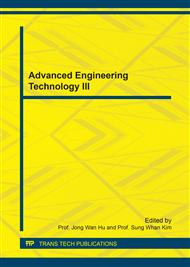p.624
p.630
p.636
p.645
p.650
p.657
p.662
p.667
p.675
Surface Material Classification Using Landsat-8 OLI Image Acquired in Ulsan by the Different Machine Learning Techniques
Abstract:
Surface material classification is an important task for the preservation of land properties and the management of land development plans. The use of remotely sensed images is efficient for the surface material classification task without human access. This research aims to select the most appropriate machine learning technique for the surface material classification task using the remotely sensed images. In this research, the three different machine learning techniques (MD (Minimum Distance), MLC (Maximum Likelihood Classification), and SVM (Support Vector Machine)) were applied for surface material classification using the Landsat-8 OLI (Operational Land Imager) image acquired in Ulsan, South Korea, in the following steps. First, the training samples for each land cover in the given Landsat images were selected by manual labor. Next, the different machine learning techniques (MD, MLC, and SVM) were applied on the given Landsat images, respectively, for carrying out the surface material classification tasks. The accuracies of the three land cover classification maps generated by the different techniques were assessed using the ground truths. Finally, accuracy comparison was conducted for selecting the most suitable approach for classifying the various surface materials in Ulsan. The statistical results show that the SVM classifier is superior to the MD and MLC classifiers for carrying out surface material classification using the given Landsat-8 OLI image.
Info:
Periodical:
Pages:
650-656
Citation:
Online since:
June 2017
Authors:
Price:
Сopyright:
© 2017 Trans Tech Publications Ltd. All Rights Reserved
Share:
Citation:


